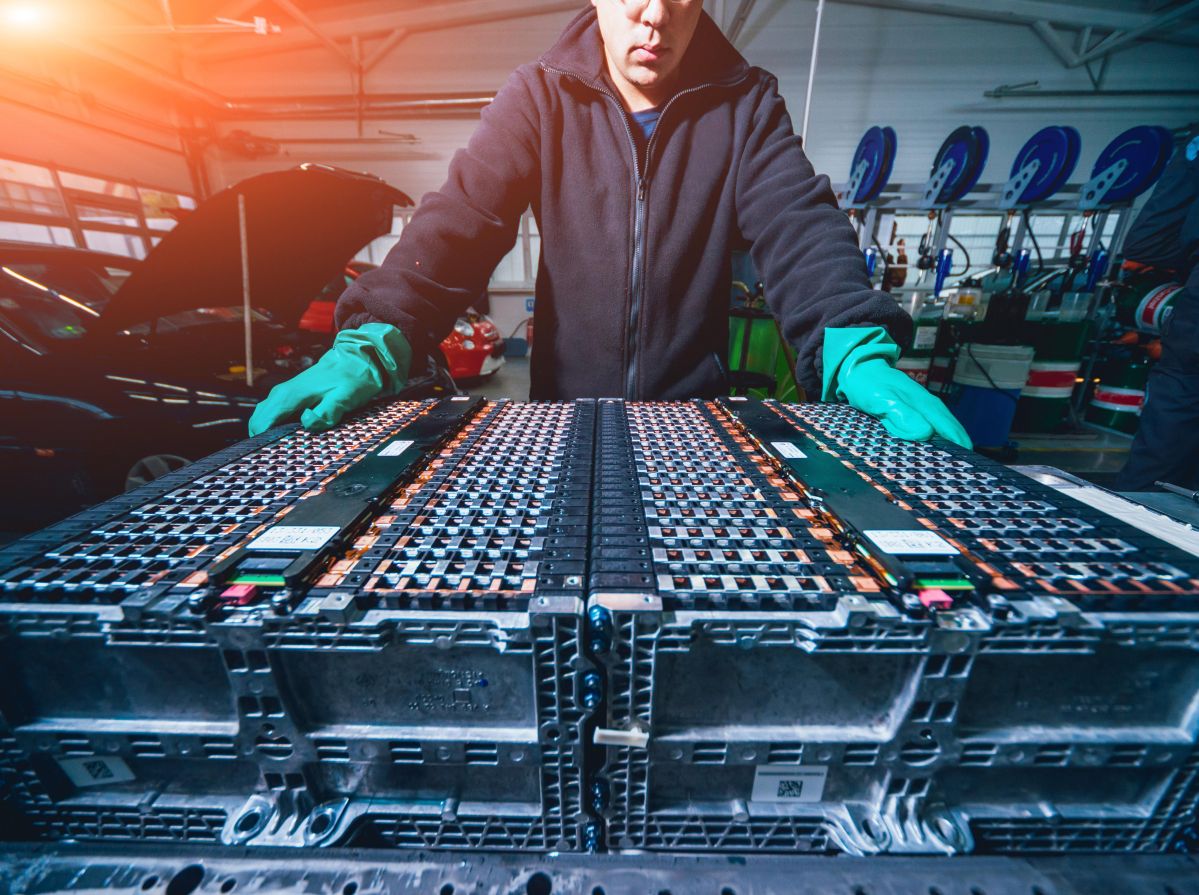As electric vehicles (EVs), especially battery electric vehicles (BEVs), become more common, collision repair shops face many challenges, such as managing high-voltage batteries, thermal runaway risks and complex diagnostics. Advanced tools, proper training and real-time access to OEM repair data are essential for safely handling BEV repairs and ensuring shops stay competitive.
In this question-and-answer article, Craig Edmonds, president of asTech, prepares operators for the challenges of EV collision repair. In addition, we hear from a collision repair shop in Glendale, AZ, which is positioning itself as consumers’ go-to repair solution for BEVs.
As EVs become more common, how can collision repair shops address the unique challenges?
Edmonds: As EVs become more prevalent, collision repair shops face several challenges. A major concern is the complexity of high-voltage (HV) systems, particularly in battery electric vehicles. BEVs rely entirely on large HV batteries for propulsion, introducing safety and technical challenges during repairs. Unlike traditional internal combustion engine (ICE) vehicles, BEVs require specialized training and equipment to handle these powerful batteries safely.
 Craig Edmonds.
Craig Edmonds.
One of the most significant challenges for repair shops is managing the HV battery, which stores substantial energy. Mishandling can lead to dangerous outcomes. Untrained technicians risk severe injury, while improper repairs could cause further damage to the vehicle.
Another challenge is the risk of thermal runaway, where an unseen internal HV battery issue, such as damage from an accident, could cause a fire. Shops must diligently monitor the battery’s condition, especially after a collision. What might look like minor damage to the battery shell could result in a catastrophic fire if not handled properly.
Moreover, BEVs depend on complex thermal management systems to regulate battery temperature. These systems must function correctly to avoid overheating, which could lead to battery degradation or failure. Collision repair shops must understand and assess these systems during repairs to ensure battery health.
Technological tools can play a key role in identifying battery issues. Once it’s safe, performing an OEM or OEM-compatible pre-scan can provide insights into the battery system’s condition. However, while onboard diagnostics help, they don’t always capture physical damage sustained in an accident, so combining data from scans with a thorough visual inspection is essential.
How important is it for shops to have a comprehensive repair plan when dealing with EVs?
Edmonds: Developing a thorough repair plan is critical for any vehicle, but especially for BEVs. Their increased complexity means that even small mistakes can turn a repairable car into a total loss. Additionally, the rising costs associated with BEV components make precision in the repair process vital.
Diagnostic tools are evolving along with vehicle technology. Many legacy OEMs have adapted their diagnostic methods to fit BEVs, helping their dealer networks avoid learning entirely new systems. However, newer BEV manufacturers are introducing more sophisticated onboard computers, integrating diagnostic tools directly into the vehicle. This shift requires technicians to adapt and learn to interpret data in new ways.
Tools like those provided by asTech can simplify this process. By connecting directly to OEM tools, shops can access the most up-to-date diagnostic procedures, ensuring technicians work with accurate data. These tools also help technicians understand complex reports and meet insurance carrier requirements, further streamlining the repair process.
What are some key differences between traditional and EV repairs?
Edmonds: Safety is one of the main differences between traditional vehicle repairs and EV repairs. While conventional vehicles don’t pose the same level of risk, working on a damaged BEV introduces hazards like high-voltage electrocution or fire. Developing safety policies and ensuring all technicians are trained on BEV systems is essential. Shops cannot afford to take risks when it comes to EV repairs.
How can advanced diagnostic tools and real-time access to OEM repair data help shops avoid common issues?
Edmonds: Advanced diagnostic tools and real-time access to OEM repair data are invaluable for shops working on BEVs. Battery diagnostics and HV system repairs are complex and require up-to-date information. Before a BEV enters the garage, shops must have the right tools, equipment, training and repair data. Access to OEM repair data in real-time ensures that technicians know the latest procedures and can avoid common pitfalls in EV repairs.
Being “service ready” for BEVs means thoroughly preparing with the necessary knowledge, parts, and skills. Waiting until a BEV arrives to start learning puts the shop and its staff at significant risk. Instead, preparation is key to maintaining safety and ensuring accurate and efficient repairs.
Arizona Collision Shop Adapts to EV Repair Market by Being ‘Service Ready’
Leigh Vilcak, body shop manager at Sands Collision Center in Glendale, AZ, is preparing his team to work on BEVs. The facility has been partnering with asTech for many years, and its partnership has encouraged it to be more “service ready.”
 Leigh Vilcak.
Leigh Vilcak.
“At Sands, we’re just beginning to see BEVs enter our service department, though not many have come through the body shop yet,” Vilcak said.
Sands Collision is part of an automotive group that also owns Chevrolet and Kia dealerships. The collision center is becoming a GM-certified repair facility.
“Manufacturers are increasingly restricting the sale of BEV parts to non-certified shops, which has made certification a top priority for us,” Vilcak said.
In addition to becoming GM-certified, Sands Collision has significantly invested in upgrading its equipment. BEVs often come with heavier batteries, which require more substantial lift equipment. Sands plans to invest in a $68,000 frame rack to accommodate the structural needs of BEVs.
Vilcak said the body shop has created clean, dedicated areas for working on EVs, especially since many BEVs are made with aluminum. Aluminum is more susceptible to cross-contamination and galvanic corrosion, he explained, and it presents unique safety risks due to its explosive tendencies in dust form. Therefore, high-voltage components and explosive dust are a huge risk when not properly handled.
Training has been a critical focus for Vilcak’s team. “We’re ensuring that our technicians are fully equipped, from using the correct safety gloves to learning how to store the large batteries that come with BEVs properly,” he said.
Looking Ahead: The Future of Collision Repair Technology
The collision repair industry must focus on continuous learning and adaptation. Although BEVs are gaining traction, they won’t dominate the market for several years. Meanwhile, hybrid vehicles will likely become more common as OEMs continue to develop and invest in them.
Repair shops must prioritize education and training in new vehicle technologies to remain competitive. Establishing standards for learning about electronics, advanced driver assistance systems (ADAS), programming and diagnostics is critical. By creating a strong foundation of knowledge in these areas, shops can ensure they are ready to service current and future vehicle technologies.













Leona Scott